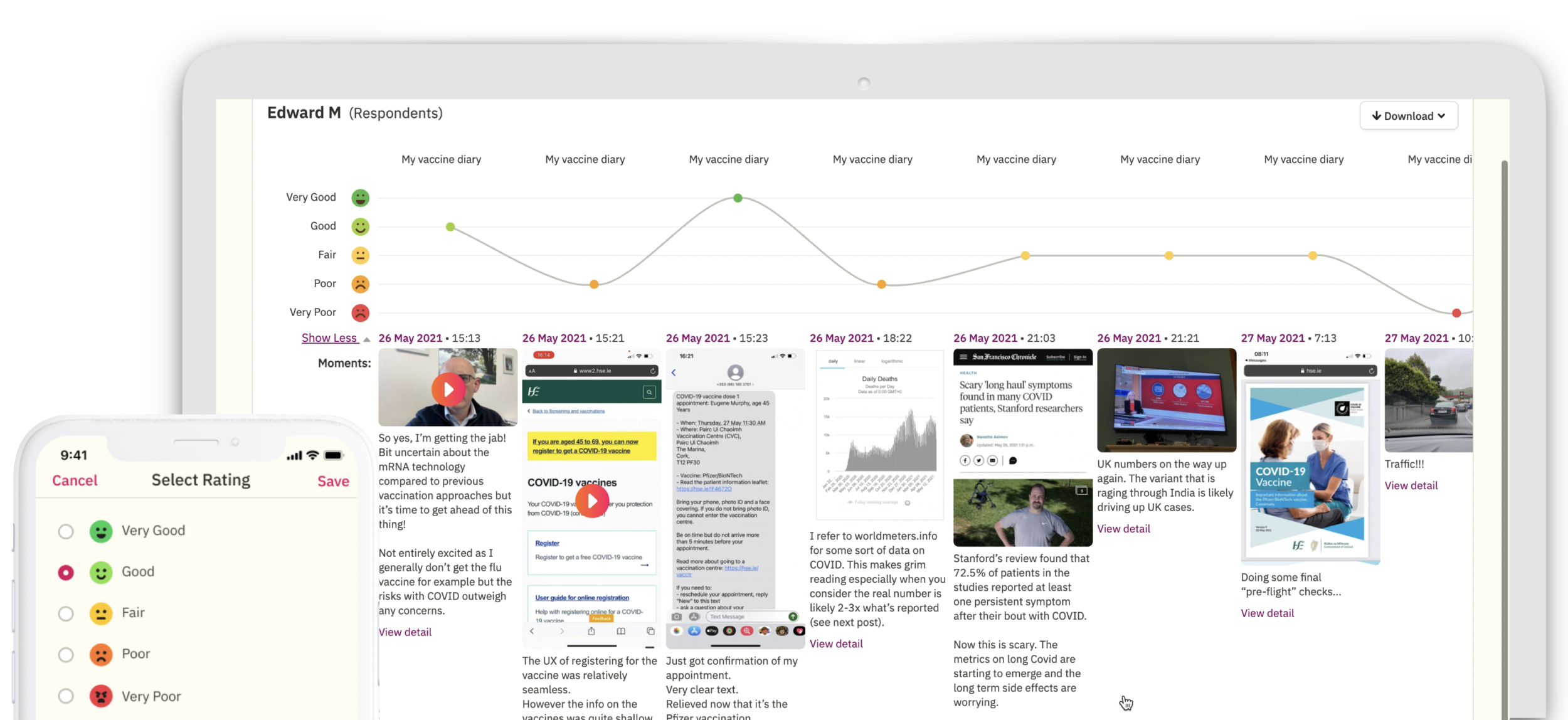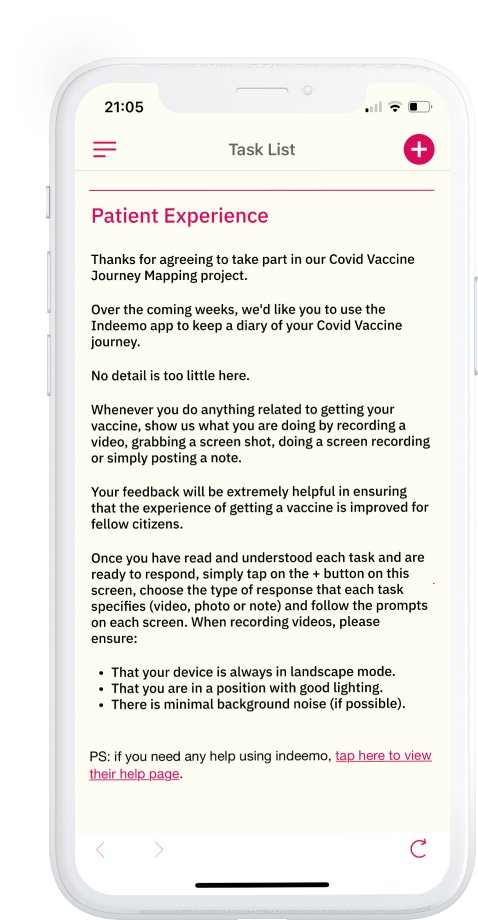The benefits of Journey Mapping tools for Patient Experience research
Since the rapid digital transformation of healthcare as a result of the global pandemic in 2020, we have seen a sharp rise in patient journey mapping. There are a number of reasons why this approach to patient experience research has become a front runner in the need to capture qualitative insights into the lives of patients.
First, Covid-19 resulted in an unanticipated, and collective shift in the way we access healthcare services. Standardised healthcare processes and procedures had to adapt quickly. From the perspective of the healthcare provider, transparency with patients required effective communication. The obstacles to face-to-face appointments made it significantly important for healthcare providers to establish a means of effective communication with patients that would not impact positive experiences.
Second, and from the perspective of the patient, the journey from booking an appointment with a GP, arriving at the clinic, receiving treatment, post visit care, and recovery, for example, was not as straightforward as the previous pre-pandemic flow. That said, apart from Covid-19, our understanding of the patient journey had already become increasingly complex.
Tele-health and digital care services have disrupted the traditional patient journey and experience. This disruption to the healthcare sector is not an outlier. The increasing digitisation of customer experiences has made it difficult to understand the new nonlinear customer journey.
Patient Journey Mapping vs a Patient Journey Map?
To coincide with this nonlinear concept of patient experiences, is the emergence of patient journey mapping tools. Patient journey mapping involves a set of tools and techniques that are used to capture the patient journey over time (To learn more, you can visit our “What is Patient Journey Mapping” page).
The concept of patient journey mapping encompasses both the digital and traditional modes of the journey. The result of journey mapping results in the visualisation of a patient journey map.
A patient journey map then, depicts the key touchpoints and pain points experienced by patients. Often, patients are segmented into various unique personas, and the collective synthesis of insights according to these personas formulates a journey map. That said, patient journey mapping is organic and hybrid from the perspective of patient experience research. For example, healthcare researchers, including UX and insights teams, may focus specifically on one area of the patient journey, or even more, conduct patient experience research pertinent to one type of patient. With this in mind, what exactly is a patient journey mapping tool? And how does it play a role in patient experience research?
What is a Patient Journey Mapping Tool?
A patient journey mapping tool is software application or platform that leverages digital ethnography / patient diaries and journey mapping dashboards to automate the mapping of the patient journey.
The journey mapping tool itself works in tandem with your field work. We previously mentioned that patient journey mapping is hybrid. What we are referring to here is that it can involve a range of techniques and research methodologies to uncover insights about the patient journey.
Ultimately, the goal of patient journey mapping is to capture a holistic view of all or some of the touchpoints and pain points of the patient journey. This can include each stage of patient flow from when they book an appointment to visit their GP or a healthcare facility, to their visit, and post visit experiences. A journey mapping tool can be used to operationalise your research and can be further used to help define the scope of your objective.
Indeemo Patient Journey Mapping Tool
To be all encompassing, a patient journey mapping tool will allow you and your team to capture patient experience data over time, whilst at the same time, mapping these experiences as they occur, in the moment. So, how then has a journey mapping tool emerged as a front runner in patient experience research?
Patient Experience Research and Journey Mapping
When we take a qualitative and exploratory approach to patient experience research, the journey mapping tool has a dual effect. In one instance, as research participants report on their experiences over the field work duration, this will automatically start visualising their journey. In addition, you will begin to uncover unknowns. We see this time and time again. Adopting a qualitative approach to patient journey mapping will always result in an array of valuable insights, without fail. Each, if not most data points will highlight areas unknown to you about the patient journey.
With reference to your patient's experiences then, the patient journey mapping tool leverages multimedia and qualitative research methodologies. Patient diaries are most commonly used for this type of patient experience research - that being the qualitative approach. We are often used to deploying satisfaction surveys to understand perceptions of the patient experience. The increased adoption of patient journey mapping and the emergence of a journey mapping tool to facilitate the automation and agility of this technique enables researchers to supplement traditional quantitative techniques with digitally-abled qualitative methods, such as, patient diaries. You might be asking, how does this work?
The dual benefit of Journey Mapping and Patient Experience Research
It is quite simple and effective. We like to refer to this as the dual effect. Since patient experience research is increasingly adopting qualitative methods to garner insights, the use of mobile and digital technology means that your research participants have the capabilities to give you a diverse range of qualitative insights. We see patient diaries leveraging the use of video, photo, text, and even mobile screen recording features to give you rich insights into their experiences.
This instantly highlights the complexities, and nonlinear structure of the patient journey in a post-pandemic and digital era. So working together, the patient journey mapping tool gathers the data reported by your research participants. It builds a journey map for each patient by integrating the qualitative data they submit through your chosen methodological approach. The nature of this approach, with the use of the journey mapping tool, presents you with the real patient experience. Across various omni channels, be it tele-health services, or face-to-face visits at your clinic - as the journey is mapped in real time, the qualitative insights of the patient experience are captured.
We see this as a dual effect primarily because as the journey mapping tool gathers the data and plots touchpoints, the qualitative data results in insights pertaining to differences in behaviours, opinions on various stages of the journey, and brings context into your understanding of the patient experience.
Let us support your next patient journey mapping project
We’ve supported thousands of research projects covering everything from mapping over the counter (OTC) path to purchase to researching the recovery journey of kidney transplant patients.
If you’d like to discuss a specific patient diary research project or are just curious to learn more, get in touch now.







